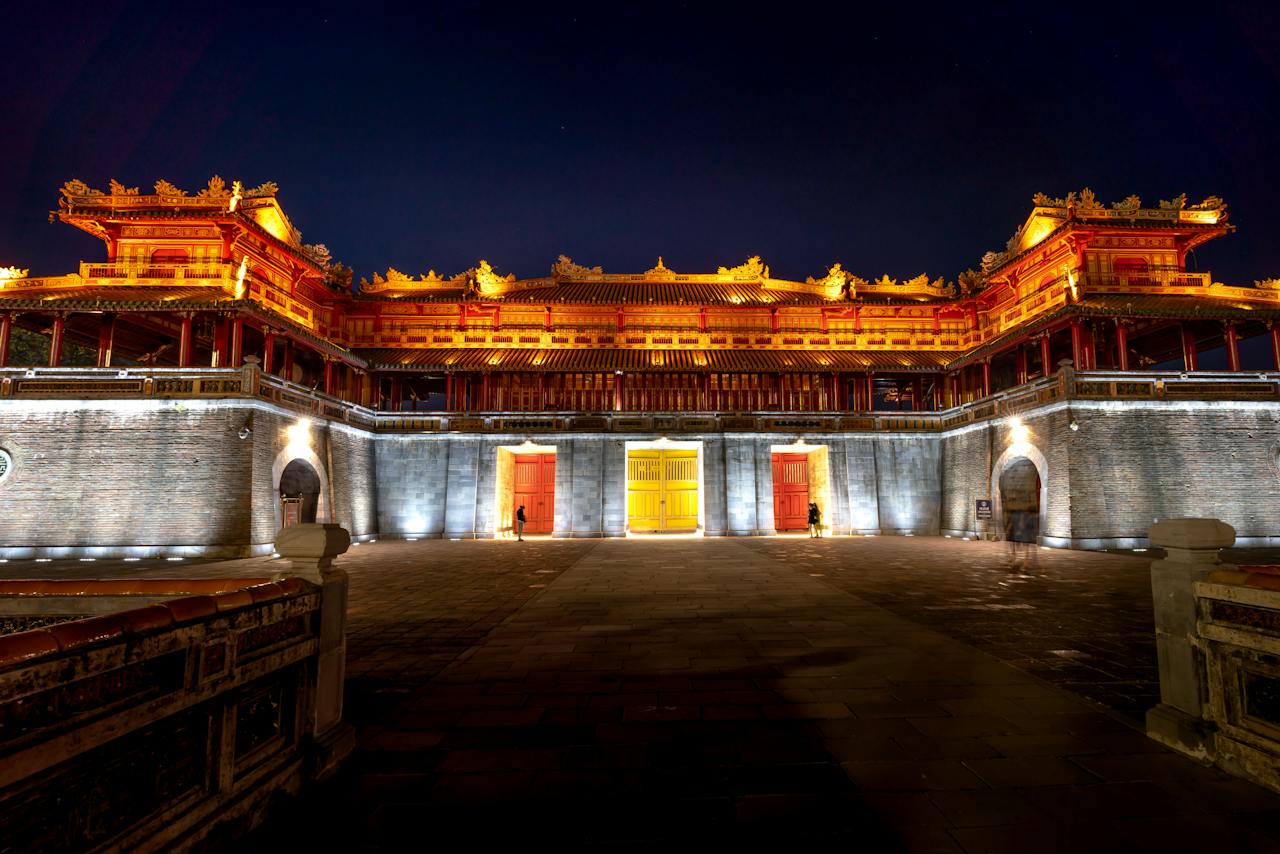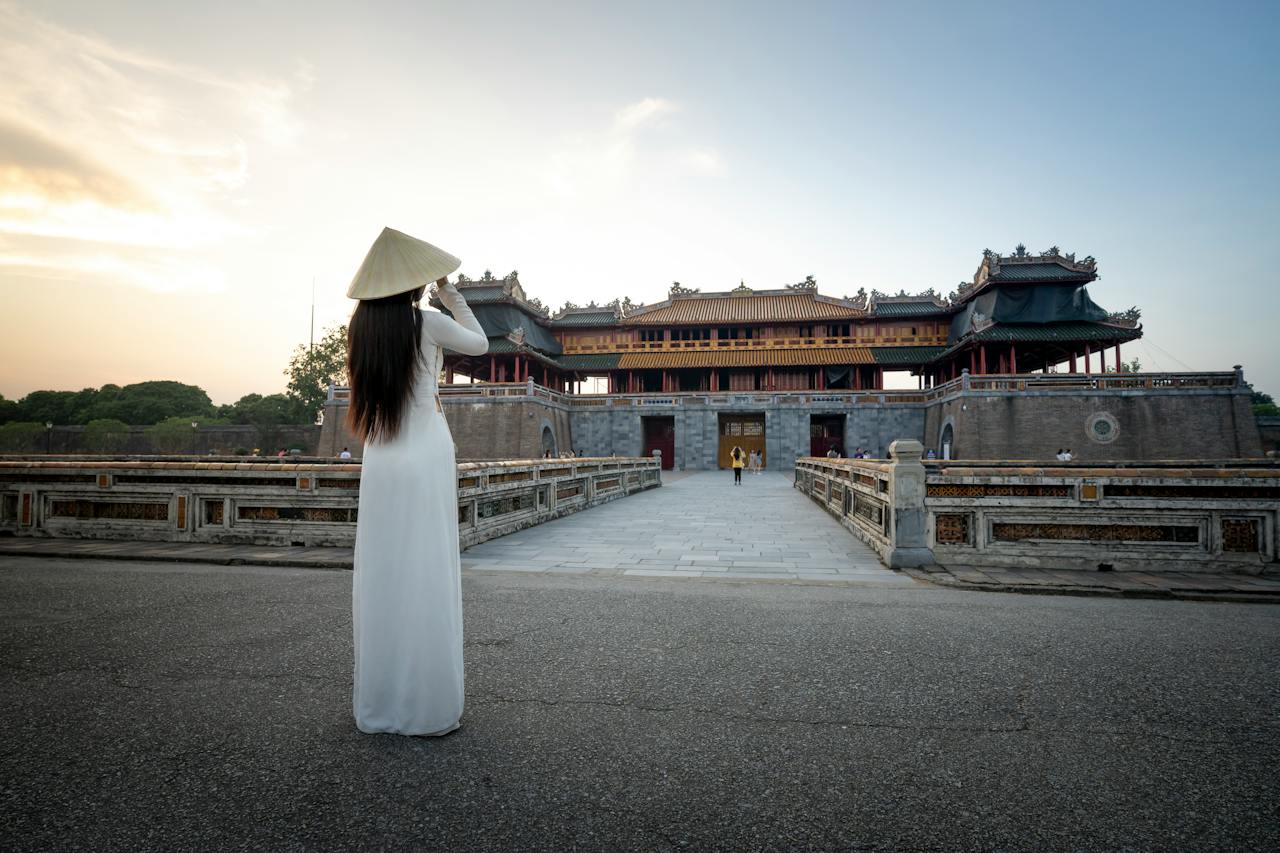Vietnam, with its rich history and diverse cultural heritage, is adorned with a myriad of temples and monuments that stand as testaments to the nation’s enduring spirit. From ancient pagodas nestled in serene landscapes to imposing historical monuments, these cultural marvels offer a glimpse into Vietnam’s past and present. In this guide, we’ll embark on a virtual tour of some of the most famous temples and monuments that grace the Vietnamese landscape.
Temple of Literature (Hanoi)
Our journey begins in the heart of Hanoi with the iconic Temple of Literature. This ancient temple, dating back to 1070, is Vietnam’s oldest university and a symbol of Confucianism. Wander through its well-preserved courtyards, admire the intricate architecture, and explore the stelae of scholars that pay homage to the nation’s intellectual legacy.
Perfume Pagoda (Hanoi)
A boat ride through scenic landscapes leads to the Perfume Pagoda, nestled in the Huong Tich Mountains. This complex of Buddhist temples is a pilgrimage site, especially during the Perfume Pagoda Festival. The journey to the main cave and its sacred grotto is not only a spiritual experience but also a visual feast of natural beauty.
Tran Quoc Pagoda (Hanoi)
Situated on an islet in West Lake, Tran Quoc Pagoda is a jewel of Buddhist architecture. Dating back to the 6th century, it is Vietnam’s oldest pagoda. The striking red color of the pagoda, coupled with its serene location, makes it a popular spot for both locals and tourists seeking tranquility amid the urban bustle.
Đền Thủy Trung Tiên (Hanoi)
Đền Thủy Trung Tiên, a unique floating temple on West Lake in Hanoi, Vietnam, offers a serene escape amidst the bustling city. Accessible only by boat, this sacred site honors the Dragon King and local deities. Visitors admire its picturesque setting, traditional architecture, and tranquil atmosphere, making it a peaceful retreat for both worshippers and tourists.
One Pillar Pagoda (Hanoi)
Nestled in the heart of Hanoi, the One Pillar Pagoda is an architectural gem with a unique history. Built in the 11th century, the pagoda rises elegantly from a single stone pillar, resembling a lotus blossom. Surrounded by a lush garden, this petite but significant monument is a symbol of Vietnamese Buddhism.
Ho Chi Minh Mausoleum (Hanoi)
A monumental structure in Hanoi, the Ho Chi Minh Mausoleum pays homage to the revolutionary leader. The grand edifice, where Ho Chi Minh’s embalmed body rests, attracts visitors from around the world. Surrounded by lush gardens and monumental structures, the mausoleum is a symbol of Vietnam’s modern history.
My Son Sanctuary (Quang Nam)
Venturing to Quang Nam province, the My Son Sanctuary unveils the remnants of the ancient Champa Kingdom. Recognized as a UNESCO World Heritage Site, these Hindu temples date back to the 4th century. Despite the ravages of time and war, the intricate carvings and towering structures still evoke a sense of the kingdom’s former glory.
Imperial City (Hue)
Hue’s Imperial City, a UNESCO World Heritage Site, served as the capital of the Nguyen Dynasty. Enclosed by massive stone walls, the complex houses palaces, gates, and shrines that reflect the grandeur of Vietnam’s imperial past. The intricate architecture and serene surroundings transport visitors to a bygone era.

Thien Mu Pagoda (Hue)
Perched on a hill overlooking the Perfume River, Thien Mu Pagoda is an iconic symbol of Hue. With its seven stories, each dedicated to a different Buddha, the pagoda exudes elegance and spiritual significance. The serene setting and historical relics make Thien Mu Pagoda a must-visit destination in central Vietnam.
Cao Dai Temple (Tay Ninh)
In Tay Ninh province, the Cao Dai Temple is a vibrant testament to Vietnam’s religious diversity. This eclectic religion blends elements of Buddhism, Christianity, Islam, and Taoism. The colorful temple, adorned with intricate details and vibrant murals, is a focal point for Cao Dai adherents and a fascinating site for cultural exploration.
Phat Diem Cathedral (Ninh Binh)
Our journey concludes with a visit to Phat Diem Cathedral, a unique fusion of Vietnamese and European architectural styles. Nestled amid the karst landscapes of Ninh Binh, this Catholic cathedral showcases a harmonious blend of cultures. The intricate carvings and tranquil surroundings make it a captivating stop on any cultural exploration of Vietnam.
Preserving Heritage and Embracing Diversity
Vietnam’s temples and monuments, scattered across the country, embody the nation’s rich cultural tapestry and storied history. From the ancient Temple of Literature in Hanoi to the tranquil Thien Mu Pagoda in Hue, these sites are not merely historical artifacts but living testaments to Vietnam’s enduring spirit. As visitors explore these cultural marvels, they not only witness the architectural prowess of the past but also embrace the diversity that defines Vietnam’s vibrant heritage.
Featured Image: Imperial City in Hue | Photo by Quang Nguyen Vinh
Read more Vietnam travel articles.

